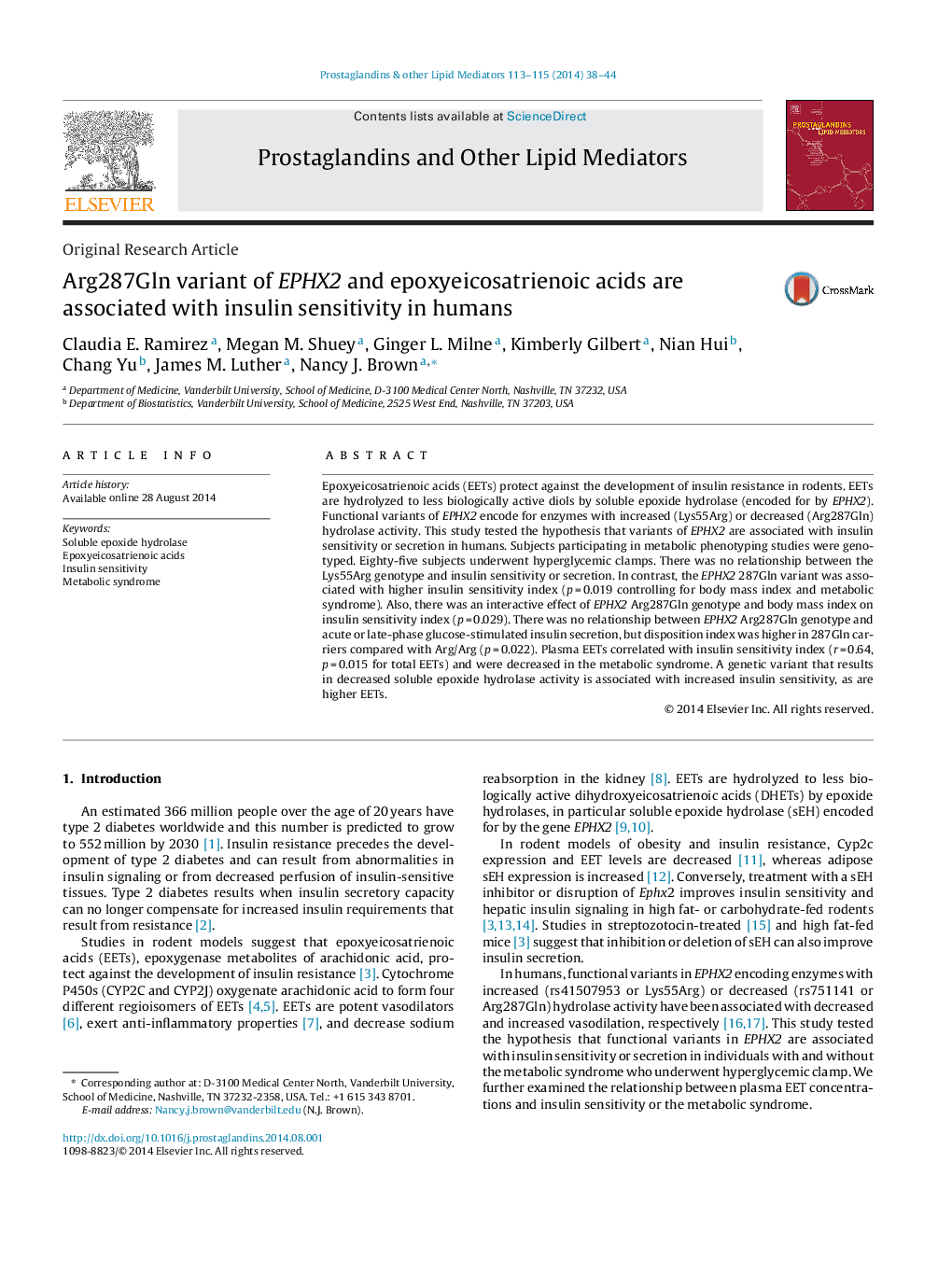| Article ID | Journal | Published Year | Pages | File Type |
|---|---|---|---|---|
| 2019488 | Prostaglandins & Other Lipid Mediators | 2014 | 7 Pages |
•Studies in rodents suggest that epoxyeicosatrienoic acids protect against the development of insulin resistance.•Epoxyeicosatrienoic acids are hydrolyzed by the enzyme soluble epoxide hydrolase, encoded for by EPHX2.•Carriers of the loss-of-function EPHX2 287Gln variant exhibit enhanced insulin sensitivity.•The impact of EPHX2 Arg287Gln genotype on insulin sensitivity is significant in individuals of BMI ≤ 30 kg/M2.•The correlation between EETs and insulin sensitivity suggests that EETs protect against the development of insulin resistance.
Epoxyeicosatrienoic acids (EETs) protect against the development of insulin resistance in rodents. EETs are hydrolyzed to less biologically active diols by soluble epoxide hydrolase (encoded for by EPHX2). Functional variants of EPHX2 encode for enzymes with increased (Lys55Arg) or decreased (Arg287Gln) hydrolase activity. This study tested the hypothesis that variants of EPHX2 are associated with insulin sensitivity or secretion in humans. Subjects participating in metabolic phenotyping studies were genotyped. Eighty-five subjects underwent hyperglycemic clamps. There was no relationship between the Lys55Arg genotype and insulin sensitivity or secretion. In contrast, the EPHX2 287Gln variant was associated with higher insulin sensitivity index (p = 0.019 controlling for body mass index and metabolic syndrome). Also, there was an interactive effect of EPHX2 Arg287Gln genotype and body mass index on insulin sensitivity index (p = 0.029). There was no relationship between EPHX2 Arg287Gln genotype and acute or late-phase glucose-stimulated insulin secretion, but disposition index was higher in 287Gln carriers compared with Arg/Arg (p = 0.022). Plasma EETs correlated with insulin sensitivity index (r = 0.64, p = 0.015 for total EETs) and were decreased in the metabolic syndrome. A genetic variant that results in decreased soluble epoxide hydrolase activity is associated with increased insulin sensitivity, as are higher EETs.
